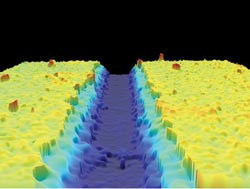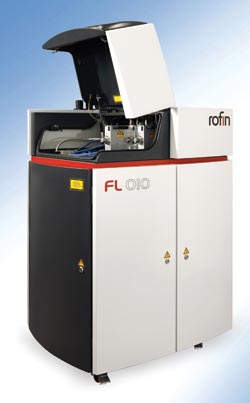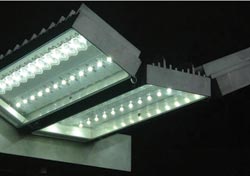Photonics is not just a mature range of technologies; it has become an entire industry sector. In Germany, the industry association Spectaris covers optics and photonics as well as medical and analytical technologies and represents a workforce of 235,000 in about 400 companies. Technologies developed here are used in almost all branches of industry, making them an important driver of Germany’s economy.
With photonics, innovations are no longer used simply to fix limited problems in other industries. There is a significant amount of technology cross-fertilization, where the combination of several optical and optoelectronic technologies leads to new solutions or benefits where the whole is greater than the sum of its parts. This is apparent when reviewing some of the latest innovations from Germany’s photonics industry, which has taken combinations of previous technologies to the next level. This way, Germany is maintaining its lead in areas where it has been historically strong, such as lasers, illumination, image processing and, most recently, solar cells and photovoltaics.

Laser processes support solar cell manufacturing because their selective energy control and deposition result in negligible mechanical and thermal impact and high processing speeds. Ultrashort laser pulses can further improve the efficiency of solar cells based on copper indium gallium selenide. These cells offer a lot of potential, but their efficiency must be improved with better structuring methods. Laser pulses help avoid damaging other parts during production.
Fibres and lasers make fibre lasers
Using fibre optic technologies for building and enhancing high-power lasers is one example of innovation. Fibre lasers are considered the next big thing in laser technology, and although other lasers, such as solid-state or gas, still are offering better performance for certain applications, there is both opportunity and potential for advancement in fibre lasers. This is underscored by the fact that most established industrial laser manufacturers have entered this domain. Trumpf’s acquisition of SPI Lasers (“Report on Western Europe,” February 2009 Photonics Spectra, p. 56) demonstrates this, as does the recent introduction of products such as the FL series by Rofin-Sinar Laser GmbH, another leader in this field. The new product offers up to 1 kW of output power and is targeted for laser materials processing, complementing the company’s CO2, slab and solid-state lasers.

Fibre lasers unite fibre optics and high-power laser technology and are considered the next big thing in laser materials processing, one of Germany’s market strengths. Product introductions by manufacturers that previously focused on CO2 and solid-state lasers – such as Rofin-Sinar Laser’s FL series – underscore this.
Materials processing is enhanced not only by new laser sources but also by advances in image processing. Researchers at the Fraunhofer Institute for Physical Measurement Techniques (IPM) have developed a superfast control method for laser welding processes that uses 14,000 images per second. This technique controls the laser’s output power and enables optimum-quality welds in car manufacturing. Imaging-based control at such high speeds – about an order of magnitude faster than is viable with conventional imaging software – is achieved by using special cameras with cellular neural networks.
IPM is also working on image-processing techniques to boost another photonics technology, solar cells. Pixel-parallel cameras ensure that no errors occur during laser processing of solar cells – for example, while cutting, drilling or structuring – often avoiding further testing at the end of manufacturing. Again, for high-yield production of solar cells, high capture rates are needed to enable on-line control.
Another target of IPM is improving the laser manufacturing technologies used in solar cell production. These include high-speed laser ablation for isolating the front of the emitter from the back of a solar cell, laser melting to form back-side contacts and laser drilling applied to silicon wafers. All these processes are currently performed with standard Q-switched solid-state lasers with nanosecond pulse durations, which do not fully utilize the technical and physical limits of lasers with regard to characteristics and results. Consequently, new sources such as ultrashort-pulsed lasers, time-domain optimized lasers, wavelength-adapted lasers, and ultracompact modular lasers are the focus of research and development. One group studying solar cell manufacturing is the European consortium Solasys (Next Generation Solar Cell and Module Laser Processing Systems), which is coordinated by Fraunhofer ILT and includes the German partners Laserline, Manz Automation, Scanlab and Trumpf.
In a related project, the Laserzentrum Hochschule München (LHM) is looking at ultrashort laser sources for the production of copper indium gallium selenide solar cells. These use small amounts of material and simple glass as substrates and are being pursued as a candidate for future solar cells. Similarly, organic materials are also being considered. They are one topic of a consortium led by Merck.
LEDs take on more illumination tasks
As with solar cells, organic materials are getting a lot of attention in terms of organic LEDs, which promise to generate light inexpensively and with low power consumption using plastics. Furthermore, and similar to their solar cell counterparts, organic LEDs can be applied in thin layers to make large-area emitters.

Using LEDs for illumination tasks in image processing has become widespread, and extending LED use to street lighting also comes with a range of practical advantages. As a result of their pulsed light operation, they are insect-friendly, and their flexible lamp head helps reduce the growing problem of light pollution.
However, applications of conventional LEDs are rapidly expanding. For example, Trumpf’s Medical Systems Div. has introduced LED-based lighting systems for hospital surgical suites, and start-up companies Autev AG and HarzOptics GmbH have worked together to develop an eco-friendly LED streetlight that is about to enter production. Not only are these lamps energy-efficient, long-lived and insect-friendly, but also the flexible lamp head helps reduce the growing problem of light pollution.
And although merging various photonics technologies and crossing borders are common themes in all these recent innovations, thinking laterally does not simply solve technical problems. It also offers a way to tackle the economic downturn, notes Birgit Ladwig, newly appointed manager of Spectaris’ Photonics and Precision Technology sector. “We see many photonics companies in Germany entering new market segments to broaden their standing in the current climate, for example into the area of security and defence.” Interestingly, there seem to be significant emotional barriers with the latter for many German companies. Although defence applications are driving photonics businesses and innovation in neighbouring European countries, companies in Germany still seem reluctant to join this trend – or at least to beat the drum about it.